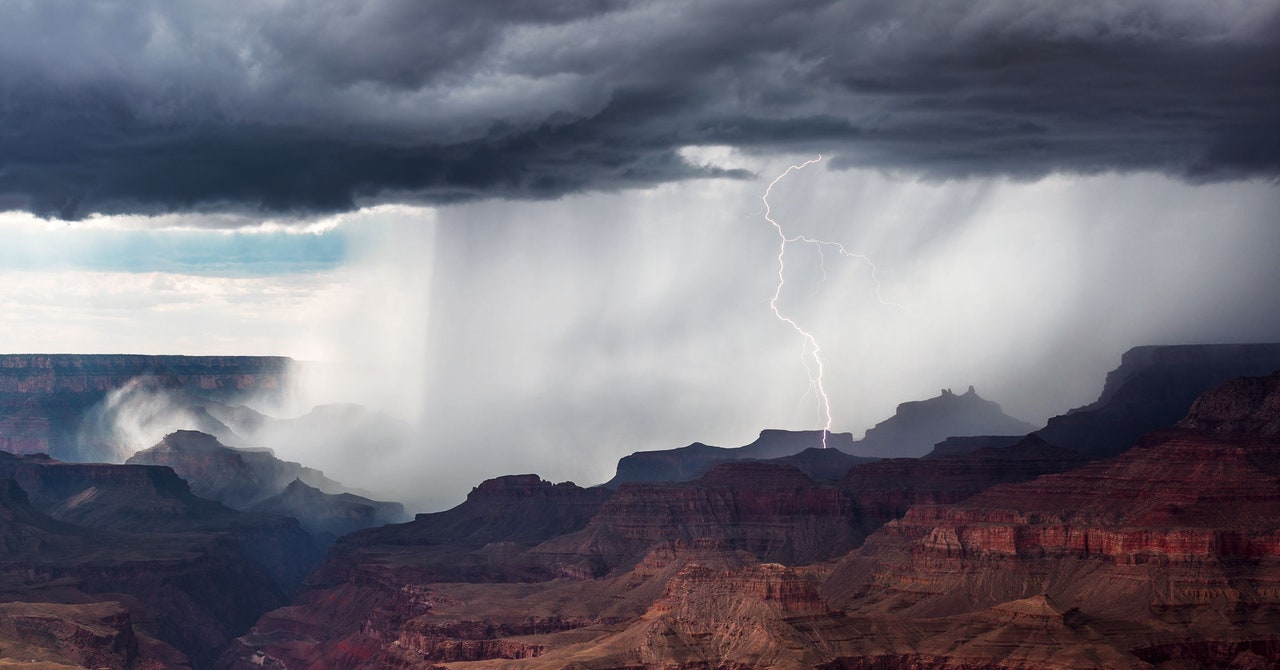Hoof it through the national parks of the western United States—Joshua Tree, the Grand Canyon, Bryce Canyon—and breathe deep the pristine air. These are unspoiled lands, collectively a great American conservation story. Yet an invisible menace is actually blowing through the air and falling via raindrops: Microplastic particles, tiny chunks (by definition, less than 5 millimeters long) of fragmented plastic bottles and microfibers that fray from clothes, all pollutants that get caught up in Earth’s atmospheric systems and deposited in the wilderness.
Writing today in the journal Science, researchers report a startling discovery: After collecting rainwater and air samples for 14 months, they calculated that over 1,000 metric tons of microplastic particles fall into 11 protected areas in the western US each year. That’s the equivalent of over 120 million plastic water bottles. “We just did that for the area of protected areas in the West, which is only 6 percent of the total US area,” says lead author Janice Brahney, an environmental scientist at Utah State University. “The number was just so large, it’s shocking.”
It further confirms an increasingly hellish scenario: Microplastics are blowing all over the world, landing in supposedly pure habitats, like the Arctic and the remote French Pyrenees. They’re flowing into the oceans via wastewater and tainting deep-sea ecosystems, and they’re even ejecting out of the water and blowing onto land in sea breezes. And now in the American West, and presumably across the rest of the world given that these are fundamental atmospheric processes, they are falling in the form of plastic rain—the new acid rain.
Plastic rain could prove to be a more insidious problem than acid rain, which is a consequence of sulfur dioxide and nitrogen oxide emissions. By deploying scrubbers in power plants to control the former, and catalytic converters in cars to control the latter, the US and other countries have over the last several decades cut down on the acidification problem. But microplastic has already corrupted even the most remote environments, and there’s no way to scrub water or land or air of the particles—the stuff is absolutely everywhere, and it’s not like there’s a plastic magnet we can drag through the oceans. What makes plastic so useful—its hardiness—is what also makes it an alarming pollutant: Plastic never really goes away, instead breaking into ever smaller bits that infiltrate ever smaller corners of the planet. Even worse, plastic waste is expected to skyrocket from 260 million tons a year to 460 million tons by 2030, according to the consultancy McKinsey. More people joining the middle class in economically-developing countries means more consumerism and more plastic packaging.
Exceedingly small bits of plastic collected in remote areas of the western US.
Photograph: Janice Brahney/Utah State UniversityTo quantify just how bad the problem has become across the American West, the researchers used collectors in 11 national parks and protected areas, sampling both rain and air. Each had a “wet” bucket to collect rainwater, and a “dry” bucket to collect air. A sensor would detect rainfall and open up the “wet” bucket while cl

